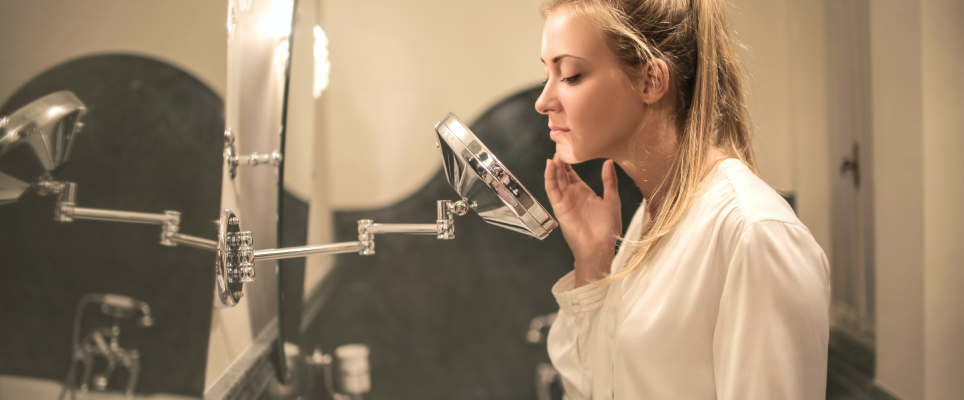There are some potential hormonal acne triggers that you should know about if you're experiencing breakouts. They include:
Insulin isn't just a hormone that's important for diabetics. Everyone should understand the role insulin levels can play in hormonal acne and overall health.
Insulin is released by the pancreas and helps to regulate blood sugar levels. When blood glucose gets too high (like it did when you ate that chocolate donut last night), insulin levels spike. This is a natural response to your rapidly increasing blood sugar levels.
When insulin spikes too frequently, your cells don't respond very well to it anymore. To rectify the problem of insulin resistance in the cells, the pancreas secretes even more insulin into the body. The cells become increasingly resistant to insulin and the damaging cycle continues (unless something interferes with it).
Insulin resistance is one of the more common triggers of hormonal acne. When insulin rises, it causes androgen levels (including testosterone) to increase. As a result, the skin produces more oil, which often leads to the development of acne.
Many people are surprised to learn that a sluggish liver can cause hormonal imbalances that lead to adult acne. But the link isn't too surprising once you understand how the liver impacts the health of the skin.
The liver is the body's largest internal organ and it has a lot of responsibilities. Some of those responsibilities include converting T4 thyroid hormone into T3, making bile to break down the fats we eat, and eliminating excess toxins and hormones from the body.
When the liver is unhealthy, it becomes sluggish and is no longer able to remove toxins and hormones from the body efficiently. As a result, the body becomes inflamed and is more likely to experience inflammatory conditions (such as hormonal acne).
Women with normal estrogen levels typically have healthy-looking skin. Estrogen binds to the androgen receptors that ramp up oil production in the skin. When you have too much or too little estrogen, your body struggles to regulate its oil production. Adult acne is a common result of estrogen imbalance.
Low progesterone is a problem impacting many women. Low progesterone levels may be caused by estrogen dominance, lack of ovulation, or poor ovarian function.
One of progesterone's many responsibilities is to regulate testosterone conversion to dihydrotestosterone (DHT). When progesterone levels are low, DHT production tends to become too high. Too much DHT can trigger acne breakouts.
Cortisol is also known as the "stress hormone," because it easily becomes imbalanced in response to high levels of stress. This important hormone also helps to regulate the body's circadian rhythm (i.e. the sleep/wake cycle).
When cortisol levels are high temporarily, they don't generally cause noticeable or lasting issues. But when cortisol levels are chronically high, they can cause inflammation throughout the body. This inflammation can lead to conditions like acne.
The thyroid gland is located in the neck and releases thyroid hormones (T3 and T4) into the body. When thyroid hormone levels are too low (as seen in cases of hypothyroidism), the body may have trouble converting beta carotene into vitamin A. This may not seem like a big deal, but vitamin A has a lot of important responsibilities, including promoting skin health. When our bodies are deficient in vitamin A, the health of our skin suffers.
Low thyroid hormones can also cause a deficiency of progesterone. This, in turn, can lead to the formation of hormonal acne. Common causes of hypothyroidism include nutrient deficiencies, insulin resistance, family history of thyroid issues, and chronic inflammation.
Some women experience excess androgen production as a result of a condition called polycystic ovarian syndrome. Women with PCOS may experience a variety of symptoms, including skin and hair issues, menstrual irregularities, insulin resistance, and obesity.
If you're not sure whether your hormones are currently imbalanced, there are blood tests you can take to find out. Your body can also give you clues when your hormones are out of whack (see the section "How Do I Know if I Have Hormonal Acne" above to review those cues).
No matter what's triggering your adult acne problem, here's what to know about treatment options and how to avoid hormone imbalances that are causing your breakouts.


